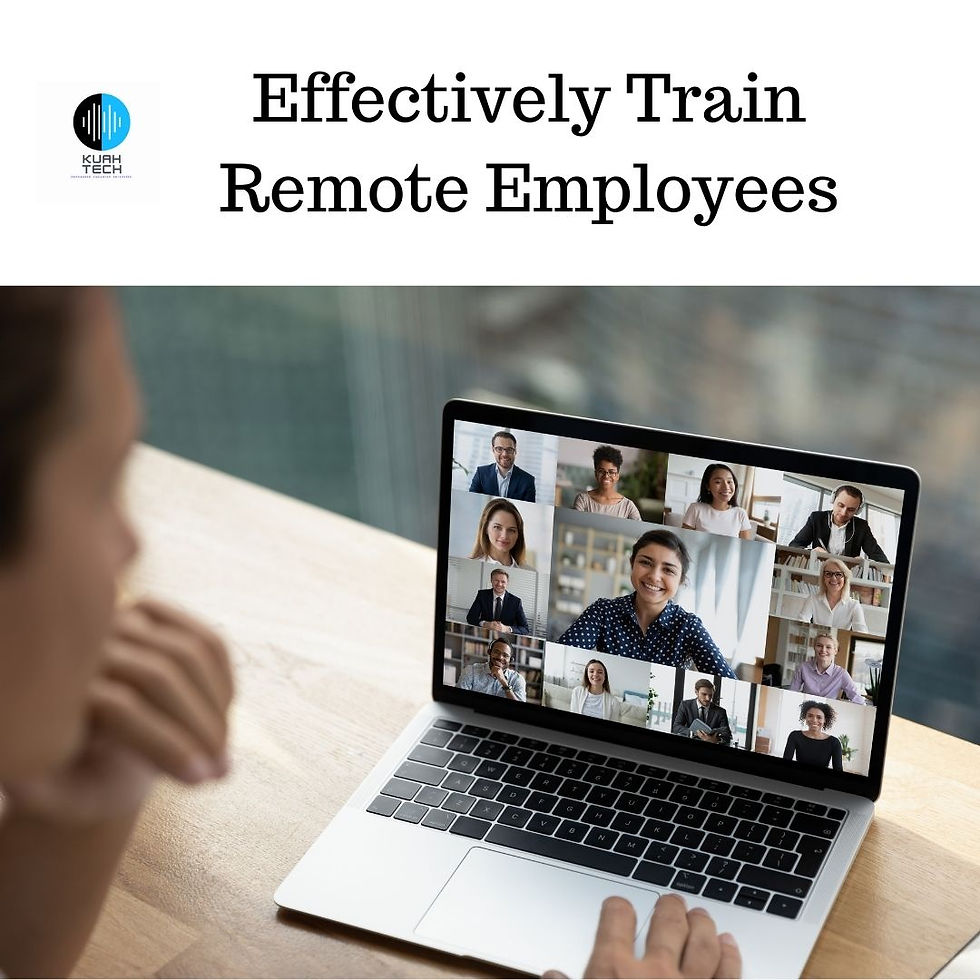How to Effectively Train Remote Employees
- Gahn Solutions

- Apr 18, 2022
- 3 min read
The Challenges of Remote Training and How to Conquer Them

Due to the pandemic and climate crisis, this decade has seen more employees (than ever before) work from home. In many cases, the switch to home working was sudden and left no time to prepare.
How can you effectively train remote employees?
This guide will help you understand how to train your remote employees to a high standard.
Table of Contents
The Difficulties Of Remote Training
Learning from home can encounter some difficulties. Knowing them beforehand can help with planning. Possible issues include:
As the training is not face-to-face some employees may struggle to give their full attention
Employees may struggle to get answers to questions during or after the training
Remote training may leave some employees feeling isolated as they are not part of a training group
At home, there could be numerous distractions from children, pets or outside noises that interrupt the training
Technology can be an issue at times, for example, if the internet connection is lost
All these potential issues could mean the training doesn't achieve the desired results. Therefore, planning everything is essential. In the next section, you can learn how to effectively train remote employees.
How To Effectively Train Remote Employees
You can choose from a variety of methods to deliver remote training. Your decisions can be based on your company needs and what will work best for each staff member.
Initial Delivery in Mind
There are many ways the training could be delivered. Here are some ideas -
Synchronous learning. This involves training at a set time for a group of people.
Asynchronous learning. You can use this method to allow staff to learn at their pace and by themselves.
Blended learning. Blended means combining the previous two options, some learning as a group, and some solo.
Use The Right Tools
To get the best result it is important everyone is using the best digital tools available. Tools include -
Conferencing and webinar platform. Depending on what you need you may need to try different platforms for different sessions. Examples include Zoom, Webex, or Larksuite.
Learning Management System (LMS). A good LMS is essential to allow the trainees to monitor their progress and access everything related to the training program.
Preparation
Once you have decided how to deliver the training you need to make sure everything is ready. This may include creating videos, quizzes, or presentations.
Final Delivery
Now everything is set up the delivery of the training should be easy. Using the LMS the trainees can access the course and complete the training as required.
Results
Once training has been completed you can monitor the trainees progress against achieving the company goals.
7 Quick Tips For Remote Learning
To help your employees have a fantastic learning experience and get the most out of it, let's cover the 7 most important tips:
Create an effective training schedule
Create a checklist so nothing is missed
Make sure full support is in place and employees know who to contact
Keep in communication with trainees and provide lots of contact about what to expect
At the start of a training session make the expectations clear, such as no mobile phones or what to do if the connection is lost
When the training ends stay online to answer questions or arrange appointments later to discuss questions or concerns
Keep the employees engaged either with certification, gamification, or rewards
Always remember: remote learning can still be fun, engaging, and educational for your employees.

Comments